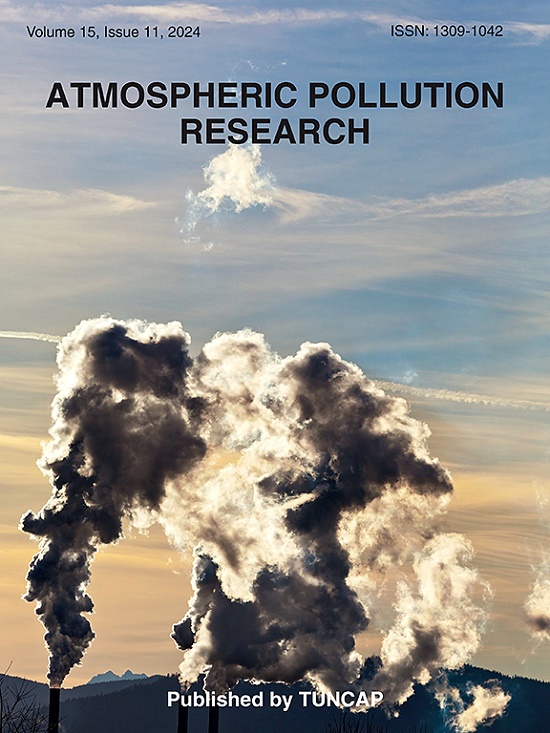Long-term evolution and synoptic meteorological modulation of PM2.5 and PM10 in Seoul
IF 3.5
3区 环境科学与生态学
Q2 ENVIRONMENTAL SCIENCES
引用次数: 0
Abstract
Addressing particulate matter (PM) pollution in megacities like Seoul is crucial for public health and environmental sustainability, necessitating a comprehensive understanding of its long-term evolution and meteorological drivers. This study investigated the key factors affecting long-term PM concentrations in Seoul, South Korea, from 2000 to 2021, with a focus on the winter (DJF) and spring (MAM) seasons. To address the gap in PM research caused by the shorter observation period of PM2.5 compared with PM10, we used an extended PM2.5 dataset. This enabled a detailed analysis of PM2.5 and its relationship with PM10, which, despite some differences, generally displayed similar variability. Both PM2.5 and PM10 exhibited decreasing trends in winter as well as spring, although the rate of decline slowed in the last decade (2011–2020) compared with the earlier decade (2000–2010). Both seasons exhibited a strengthened interannual correlation between PM2.5 and PM10 in the last decade. Daily PM2.5 and PM10 levels generally fluctuated in a similar pattern in both seasons, which can be attributed to synoptic-scale meteorological systems, particularly migratory systems from Northwest China, which can remain stationary over Korea for several days, particularly in winter. This pattern continues into spring, albeit with a lower intensity. These findings provide valuable insights into PM2.5 variability and its correlation with PM10 over time, which may inform future PM2.5 mitigation strategies.

首尔地区PM2.5和PM10的长期演变及天气气象调制
解决首尔等特大城市的颗粒物污染问题对公共健康和环境可持续性至关重要,需要全面了解其长期演变和气象驱动因素。本研究调查了2000 - 2021年影响韩国首尔长期PM浓度的关键因素,重点研究了冬季(DJF)和春季(MAM)季节。为了解决PM2.5与PM10相比观测周期较短导致的PM研究空白,我们使用了扩展的PM2.5数据集。这使得PM2.5及其与PM10的关系得以详细分析,尽管存在一些差异,但总体上表现出相似的可变性。PM2.5和PM10在冬季和春季均呈下降趋势,但近10年(2011-2020年)的下降速度较前10年(2000-2010年)有所放缓。在过去十年中,两个季节的PM2.5和PM10的年际相关性都有所增强。在这两个季节,PM2.5和PM10的日波动模式大致相似,这可归因于天气尺度的气象系统,特别是来自中国西北的迁徙系统,它们可以在朝鲜上空停留数天,特别是在冬季。这种模式一直持续到春季,尽管强度有所降低。这些发现为PM2.5变异性及其与PM10随时间的相关性提供了有价值的见解,这可能为未来的PM2.5减缓策略提供信息。
本文章由计算机程序翻译,如有差异,请以英文原文为准。
求助全文
约1分钟内获得全文
求助全文
来源期刊

Atmospheric Pollution Research
ENVIRONMENTAL SCIENCES-
CiteScore
8.30
自引率
6.70%
发文量
256
审稿时长
36 days
期刊介绍:
Atmospheric Pollution Research (APR) is an international journal designed for the publication of articles on air pollution. Papers should present novel experimental results, theory and modeling of air pollution on local, regional, or global scales. Areas covered are research on inorganic, organic, and persistent organic air pollutants, air quality monitoring, air quality management, atmospheric dispersion and transport, air-surface (soil, water, and vegetation) exchange of pollutants, dry and wet deposition, indoor air quality, exposure assessment, health effects, satellite measurements, natural emissions, atmospheric chemistry, greenhouse gases, and effects on climate change.
 求助内容:
求助内容: 应助结果提醒方式:
应助结果提醒方式:


